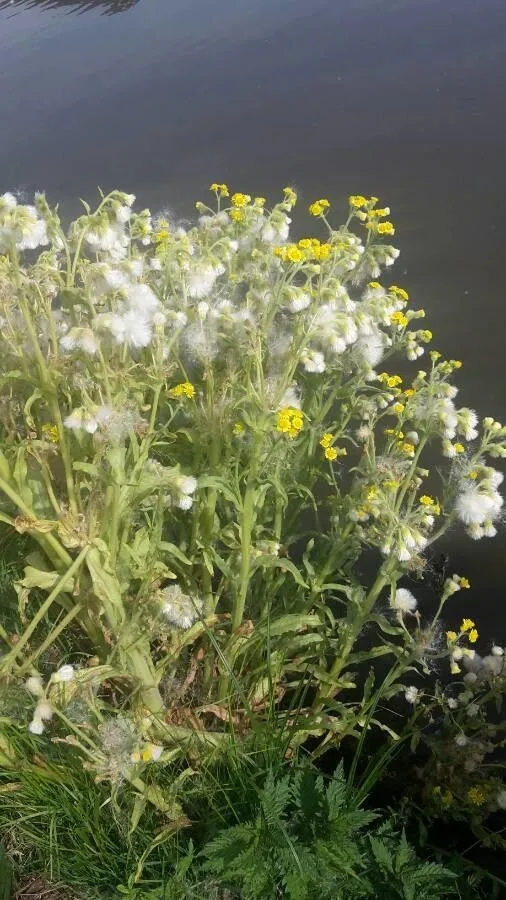
Author: Fourr.
Bibliography: Ann. Soc. Linn. Lyon, sér. 2, 16: 404 (1868)
Year: 1868
Status: accepted
Rank: species
Genus: Tephroseris
Vegetable: False
Observations: Temp. Northern Hemisphere
Moor-greiskraut, scientifically known as Tephroseris palustris, is a distinctive member of the Asteraceae family. This hardy perennial plant, first described in 1868 by the botanist Fourr. in the “Annales de la Société Linnéenne de Lyon”, thrives in the temperate regions of the Northern Hemisphere.
Renowned for its adaptive capabilities, Tephroseris palustris typically inhabits wetlands, marshes, and other moist environments where it contributes to the ecological diversity. The plant is characterized by its upright growth and clusters of yellow, daisy-like flowers that bloom during the warmer months. These vibrant flowers not only add a splash of color to the often-muted tones of marsh landscapes but also play a crucial role in supporting local pollinators.
The morphology of Moor-greiskraut is equally fascinating, with its lanceolate leaves forming a basal rosette at the plant’s base, and the flower stalks rising well above the foliage. This growth habit ensures effective seed dispersal and visibility to pollinators such as bees and butterflies.
In addition to its ecological significance, Moor-greiskraut has been studied for its potential medicinal properties, which are characteristic of many members of the Asteraceae family. However, care should be taken when considering its medicinal use, as comprehensive studies are still necessary to confirm its efficacy and safety.
Through its presence in the Northern Hemisphere, Tephroseris palustris plays a vital role in maintaining the health and balance of wetland ecosystems. Its ability to thrive in such habitats makes it a species worth conserving, highlighting the intricate connections between plants and their environments.
Deu: moor-aschenkraut, moorgreiskraut
Eng: marsh fleawort
Nld: moerasandijvie
Fra: séneçon ramassé
Swe: kärrnocka
Cym: chweinllys y gors
En: Moor-Greiskraut, Marsh fleawort, Marsh groundsel, Clustered Marsh Squaw-Weed, Marsh fleabane, Marsh ragwort, Mastodon flower, Northern swamp groundsel, Swamp ragwort
Be: Старасцень балотны
Zh: 湿生千里光
Da: Kær-Fnokurt, Dynd-brandbæger
Nl: Moerasandijvie
Et: Muda-ristirohi
Fi: Luhtakarvakko
Fr: Tephroseris palustris, Séneçon des marais, Cinéraire des marais
De: Moor-Greiskraut
It: Tephroseris palustris
La: Tephroseris palustris
Lt: Gauruotoji žilė
Pl: Starzec błotny
Es: Tephroseris palustris
Cy: Chweinllys y gors
: Moor-greiskraut
Taken Jun 2, 2020 by Reinier Feijen (cc-by-sa)
Taken May 11, 2020 by Lennaert Steen (cc-by-sa)
Taken May 27, 2021 by Arie Wiechertjes (cc-by-sa)
Taken Jun 10, 2021 by Martien Briët (cc-by-sa)
Taken Jun 23, 2022 by Skitty Atropha (cc-by-sa)
Taken May 11, 2020 by Lennaert Steen (cc-by-sa)
Taken Apr 28, 2020 by henk henk (cc-by-sa)
Taken Jun 2, 2020 by Reinier Feijen (cc-by-sa)
Taken Jun 2, 2020 by Reinier Feijen (cc-by-sa)
Taken Jun 2, 2020 by Reinier Feijen (cc-by-sa)
© copyright of the Board of Trustees of the Royal Botanic Gardens, Kew.
© copyright of the Board of Trustees of the Royal Botanic Gardens, Kew.
© copyright of the Board of Trustees of the Royal Botanic Gardens, Kew.
Growth habit>: Forb/herb
Ph maximum: 7.0
Ph minimum: 6.5
Light: 7
Atmospheric humidity: 9
Soil nutriments: 4
Family: Myrtaceae Author: (F.Muell.) K.D.Hill & L.A.S.Johnson Bibliography: Telopea 6: 402 (1995) Year: 1995 Status:…
Family: Rubiaceae Author: Pierre ex A.Froehner Bibliography: Notizbl. Bot. Gart. Berlin-Dahlem 1: 237 (1897) Year:…
Family: Sapindaceae Author: Koidz. Bibliography: J. Coll. Sci. Imp. Univ. Tokyo 32(1): 38 (1911) Year:…
Family: Asteraceae Author: A.Gray Bibliography: Pacif. Railr. Rep.: 107 (1857) Year: 1857 Status: accepted Rank:…
Family: Fabaceae Author: Medik. Bibliography: Vorles. Churpfälz. Phys.-Ökon. Ges. 2: 398 (1787) Year: 1787 Status:…
Family: Aspleniaceae Author: (Cav.) Alston Bibliography: Bull. Misc. Inform. Kew 1932: 309 (1932) Year: 1932…